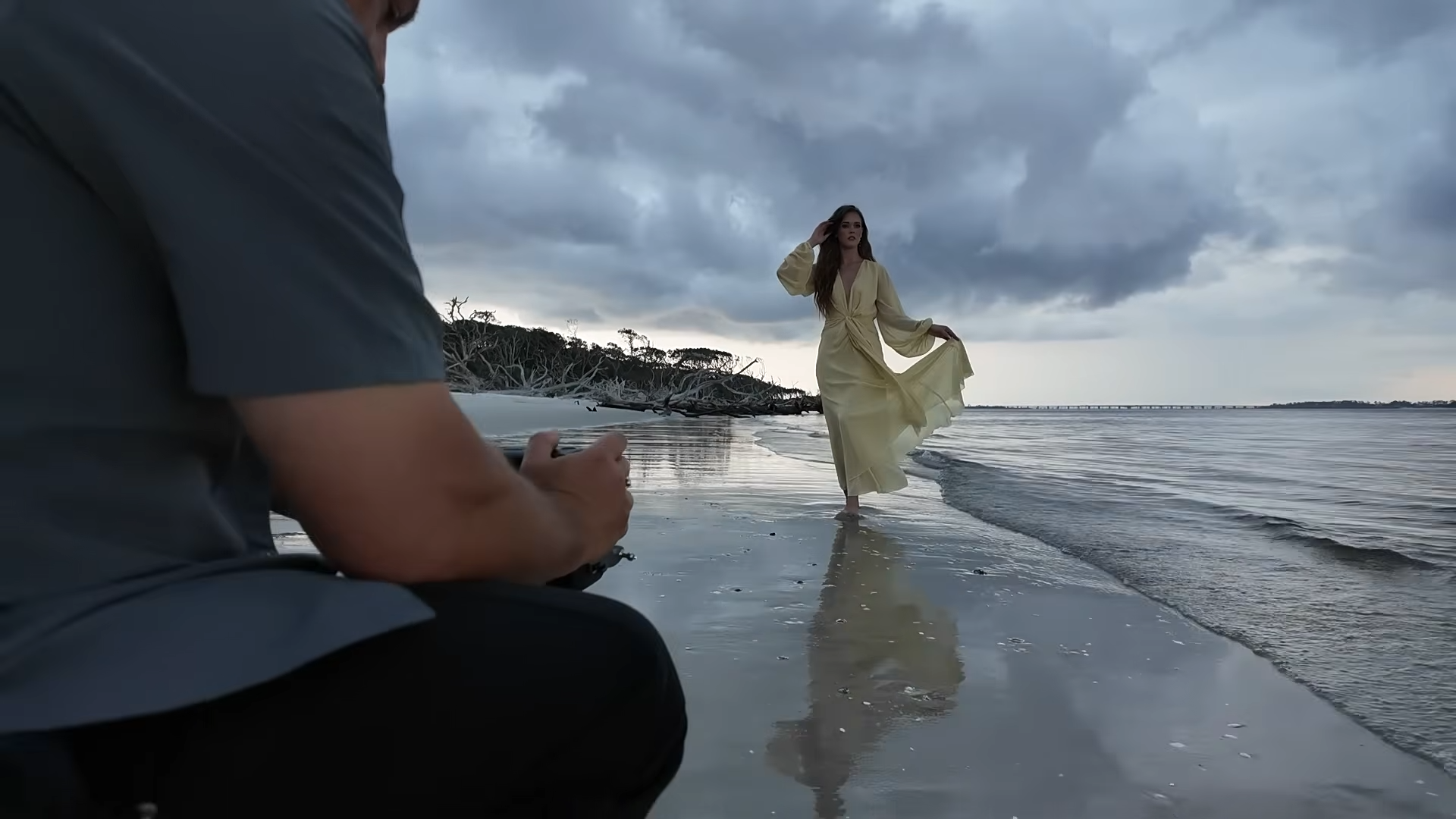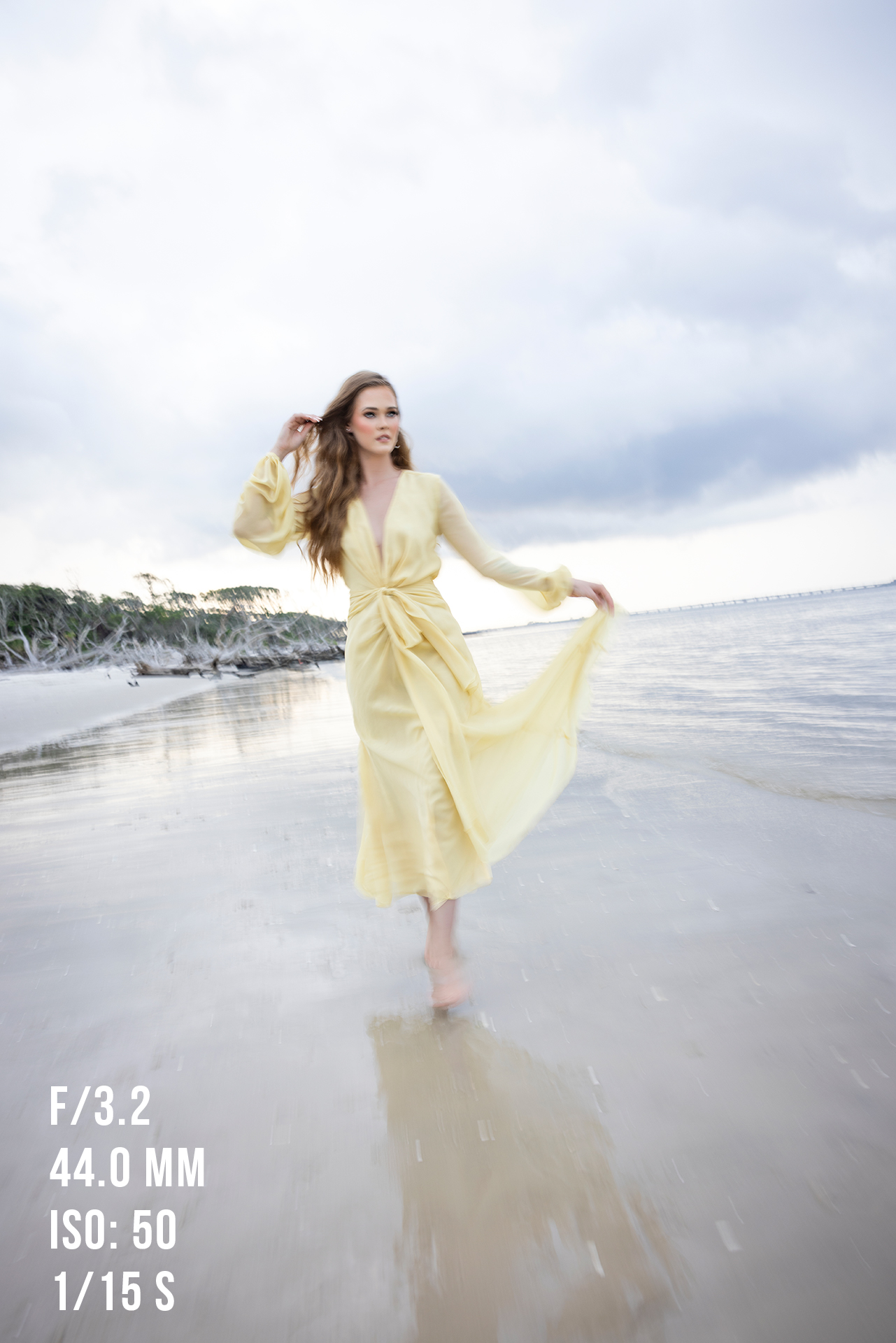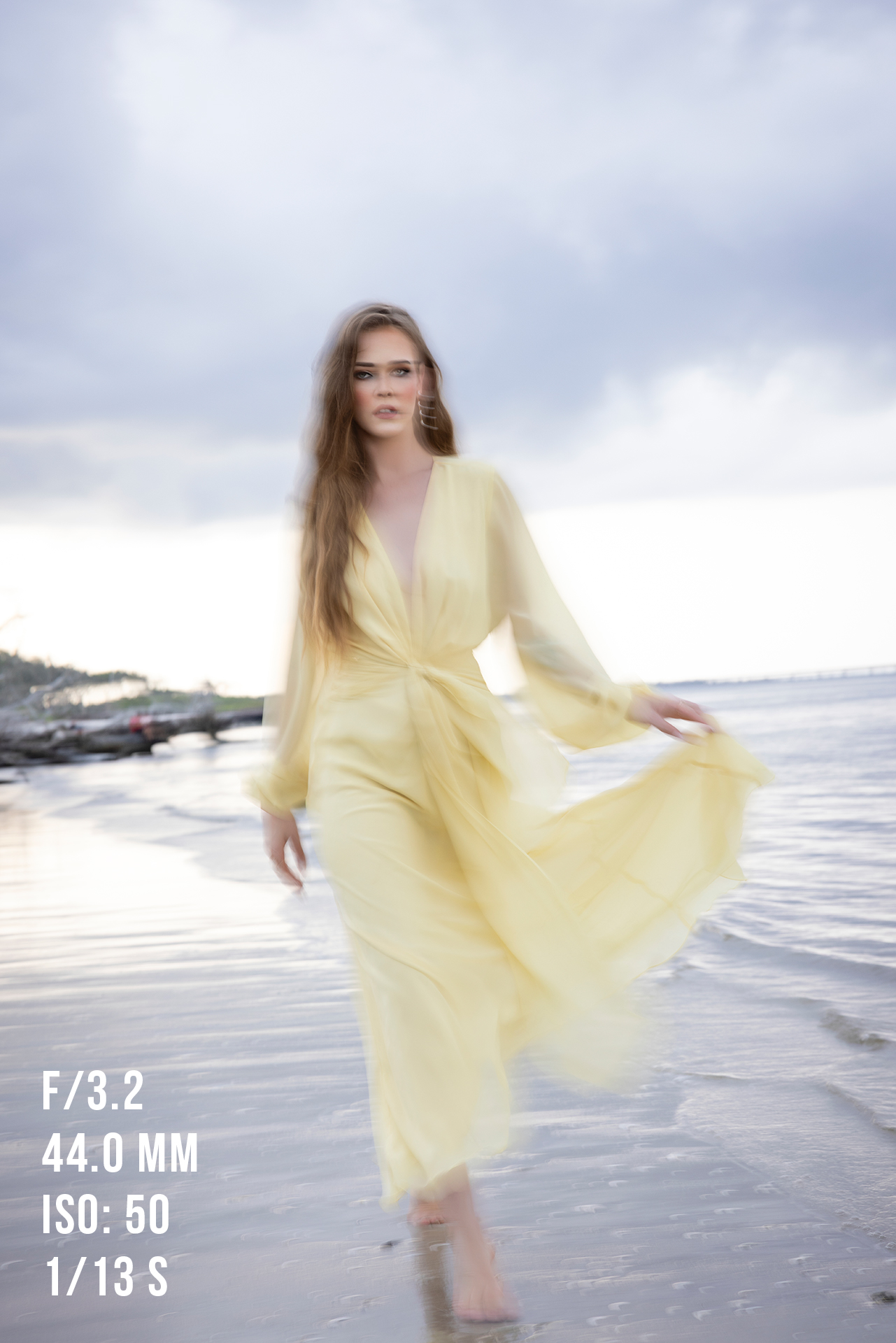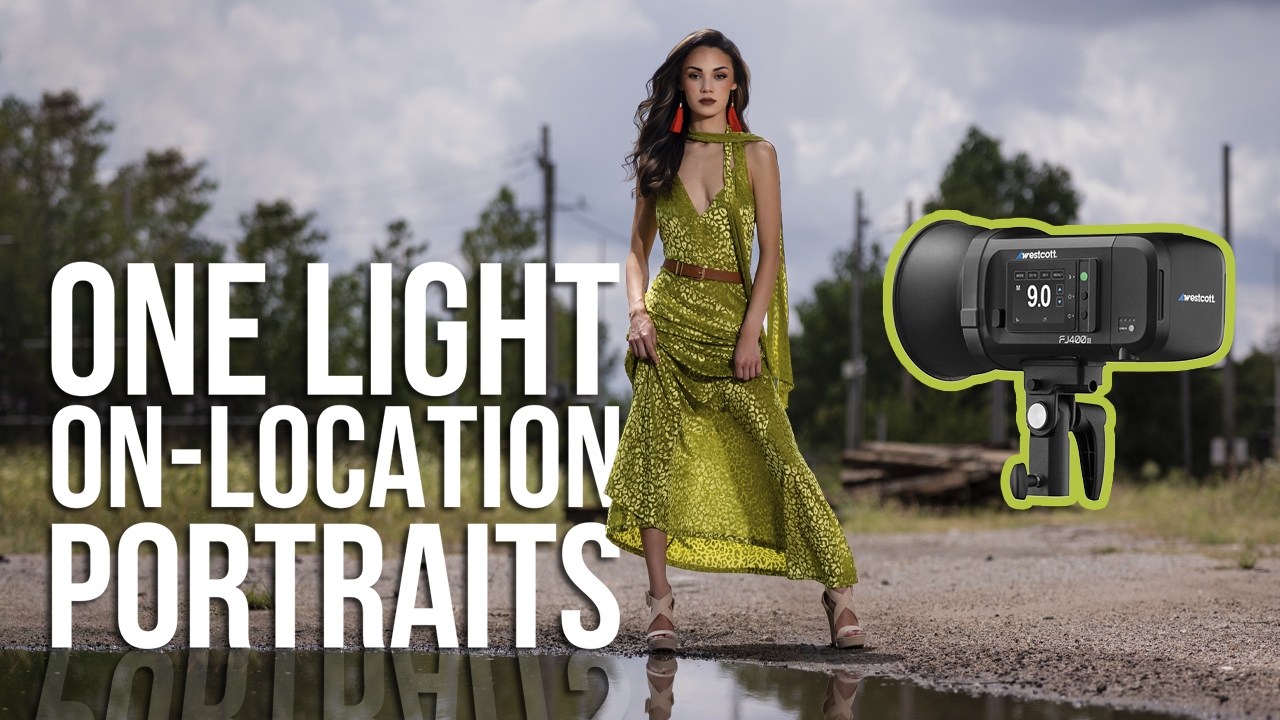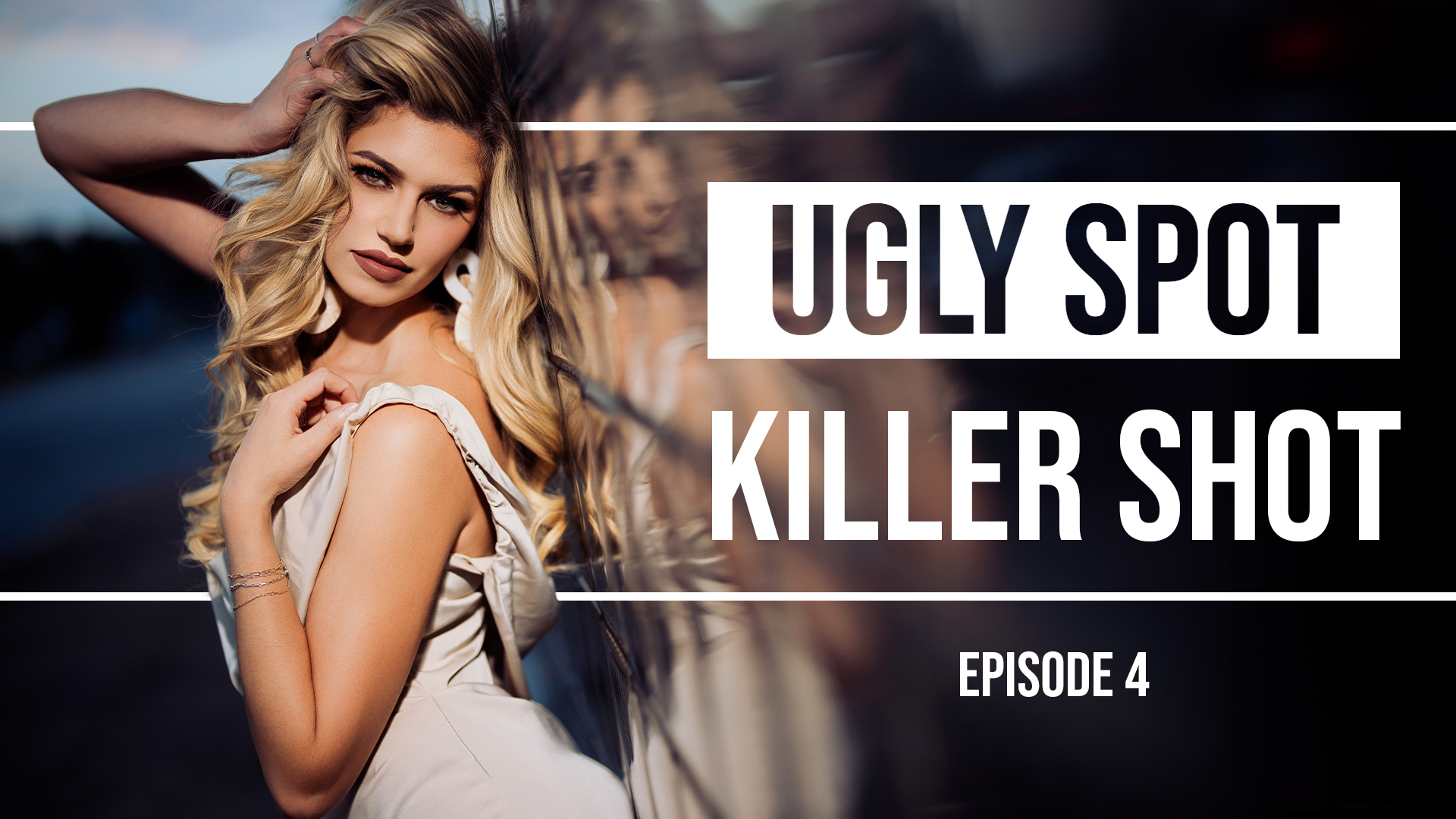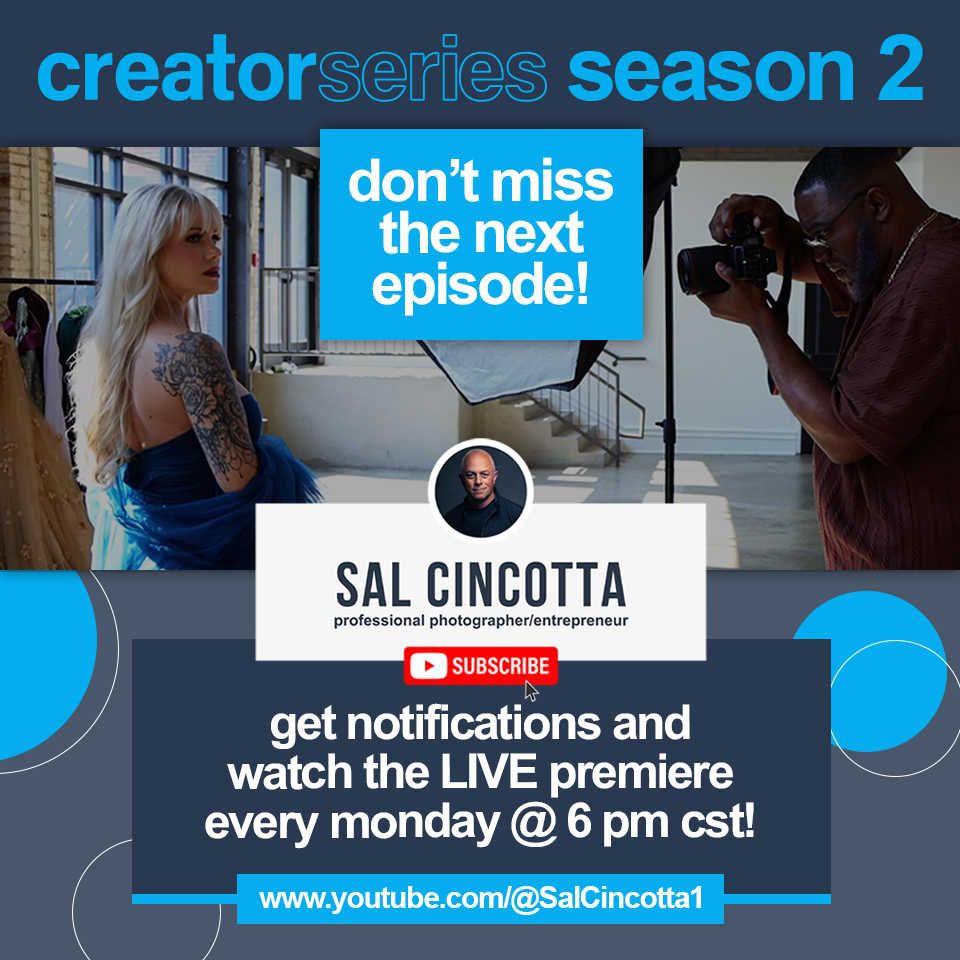As photographers, we spend most of our time trying to make everything tack-sharp. That’s how we’re trained—focus, freeze, perfection. But every now and then, a trend comes along that breaks all the rules. A few years ago, it was direct on-camera flash. And now? It’s blurry photos.
Yes, blurry is having a moment.
If you’ve noticed big brands leaning into intentional motion blur, you’re not alone. From fashion to lifestyle shoots, blur is being used to add energy, emotion, and authenticity. The trick is making it look good—not accidental. Today, I’m walking you through how to take GOOD blurry photos that feel elevated, creative, and purposeful.
Let’s break it down.
GEAR USED IN THIS SETUP
- Camera: Canon EOS R5
- Lens: RF28-70mm F2 L USM
Team:
Photographer: Sal Cincotta
Model: Violet Deardorff
Hair & Makeup: Brandi Patton, ReFine Beauty
Step 1: Get Your Safe Shots First
Before you experiment, always make sure you’ve nailed the essential images—especially if you’re working with a paying client. Whether it’s a wedding, senior session, or commercial job, I like to spend 80–90% of the shoot getting those clean, sharp must-haves. That last 10%? That’s where I play. That’s where creative blur comes in.
For this shoot, I used my Canon R5 with a 70mm f/1.2 lens and photographed wide open at f/1.2 to capture soft, dreamy portraits with beautiful depth. Natural light gave us a quick, easy setup and let us flow through poses without adjusting gear between shots.
But while natural light is fast and flexible, it also has its limitations—especially when it comes to consistency, direction, and mood.
Step 2: Understand Where the Motion Should Be
Blurry photos work best when there’s something naturally moving in the frame—flowing fabric, crashing waves, wind-blown hair, or your subject in motion. In my recent beach shoot, I used both moving water and a flowy dress to add visual energy. The key is to let the blur happen in the right places—while still keeping the photo usable.
Step 3: Dial In Your Shutter Speed
This is the biggest technical element in how to take good blurry photos. Start by shooting in manual mode or aperture priority, and bring your shutter speed down to around 1/40th of a second. Depending on how much blur you want, you can drop it further—try 1/20th or even 1/13th.
Keep your ISO low to avoid overexposing your highlights, and use a wide aperture (I was around f/3.2). If you hold your camera completely still at these settings, your subject might still be sharp. But once they start moving—or you move the camera slightly—that’s where the magic starts.
Step 4: Add Motion—With Intention
Once your settings are locked in, start experimenting. You can:
- Have your subject walk, spin, or toss their hair
- Zoom in or out during the exposure
- Shoot while they’re moving slowly to create trailing motion
- Let fabric or hair catch the wind and exaggerate that with your timing
Pro tip: Keep your camera stable. Plant your feet. Pretend you’re a tripod. The more stable you are, the more control you have over where the blur lands in the frame.
Step 5: Evaluate and Refine
This isn’t about getting 100 perfect shots. If I get one or two images that feel ethereal and artistic, I call it a win. Try different directions of movement. Shoot through the motion. If it doesn’t work, adjust. That’s the beauty of creative blur—there’s no perfect formula. It’s about feel.
When to Use Blurry Photos in Your Portfolio
Blurry doesn’t mean unprofessional. It can be used in:
- Fashion or branding sessions to add a sense of energy
- Senior portraits for a playful or dramatic effect
- Weddings to create artistic, storytelling moments
Just be sure your client understands what you’re doing. It helps to show a few examples ahead of time so they get the vibe.
Final Thoughts
Knowing how to take GOOD blurry photos means knowing how to break the rules with intention. This is about creative control—not mistakes. So go out and try it. Add blur. Add motion. Add feeling. And don’t be afraid to experiment. That’s what being an artist is all about.
Whether it’s a high school senior, a fashion client, or even a bride, intentional blur can elevate your work and give your portfolio a fresh, modern edge.





